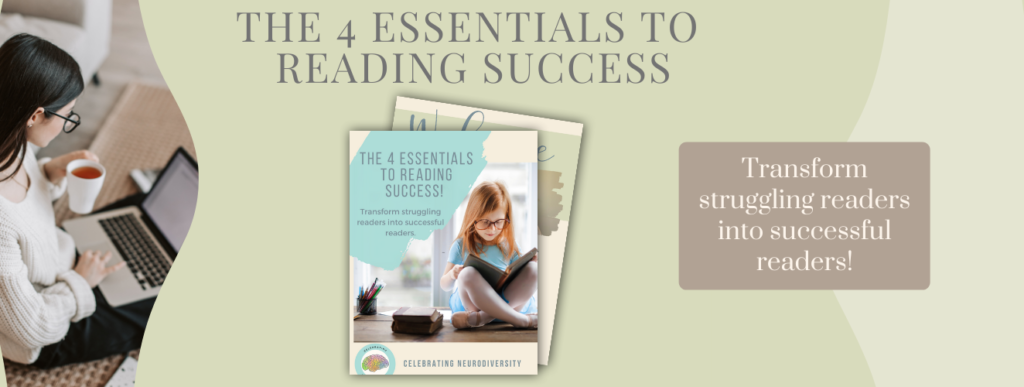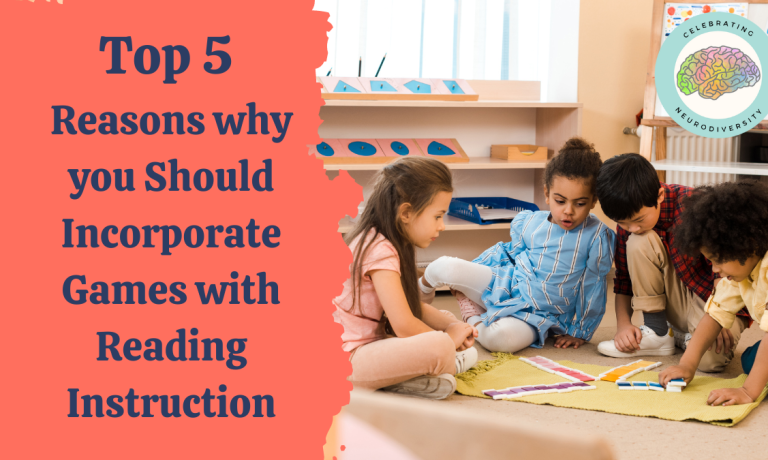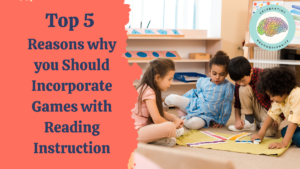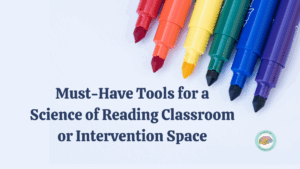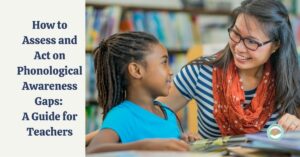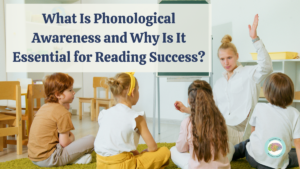Do your students groan when it’s time for more reading practice? What if you could turn those groans into cheers and boost skill mastery at the same time? Incorporating games with reading lessons can provide a fun and effective way for students to master skills. My students love to play games and I love all the benefits games provide. Here are the top 5 reasons why you should be using games with your reading instruction.
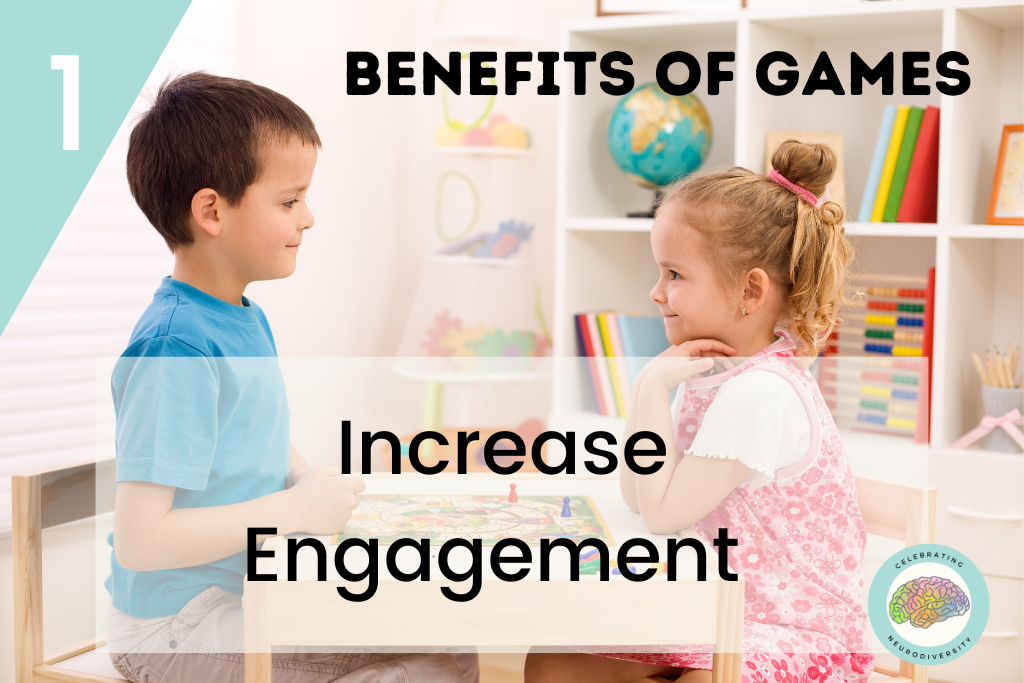
# 1 Increase Engagement
Games are a built-in motivator in my reading lessons. My students look forward to the game portion of our time together. They know that once they complete their lesson activities and give their best effort, a fun game is waiting for them. It’s not just about playing, it’s about working hard, then celebrating that effort with something exciting and meaningful. This simple structure helps keep students focused, gives them something to look forward to, and makes learning feel like a positive, rewarding experience.
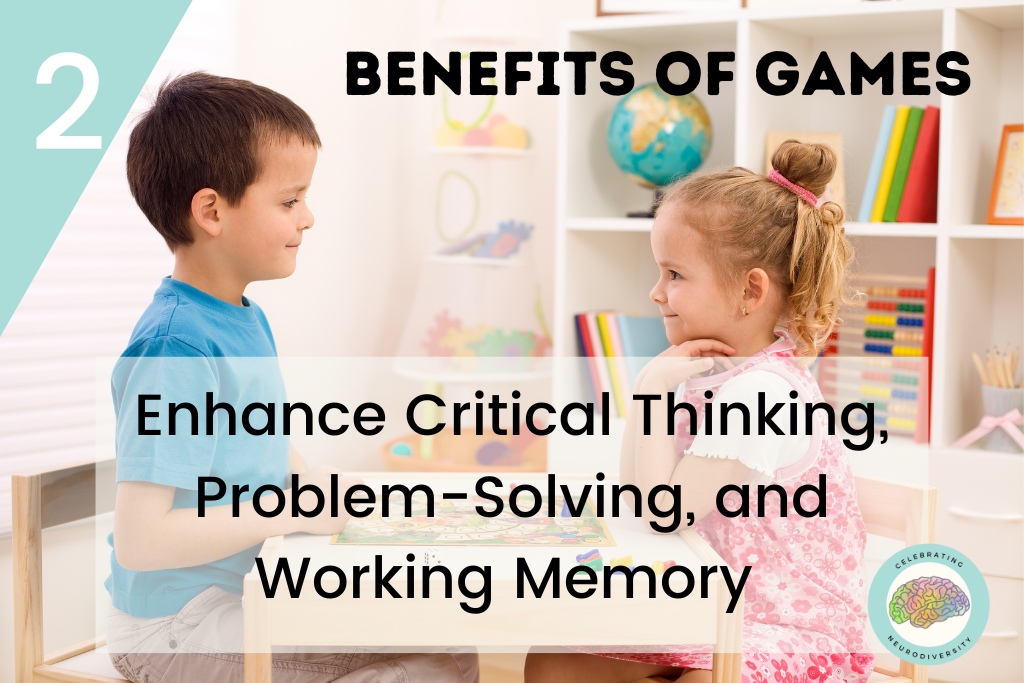
# 2 Enhance Critical Thinking, Problem-Solving, and Working Memory
All of the games I use in reading instruction do more than reinforce academic skills, they also strengthen executive functioning. As students play, they’re using working memory to remember rules, apply phonics patterns, and keep track of their turns or points. They’re also practicing cognitive flexibility and problem-solving as they make decisions, adapt strategies, and respond quickly to new information. These mental muscles are crucial for reading success. I’ve seen students who typically struggle with attention become completely locked in during game time, focused, strategic, and eager to participate.
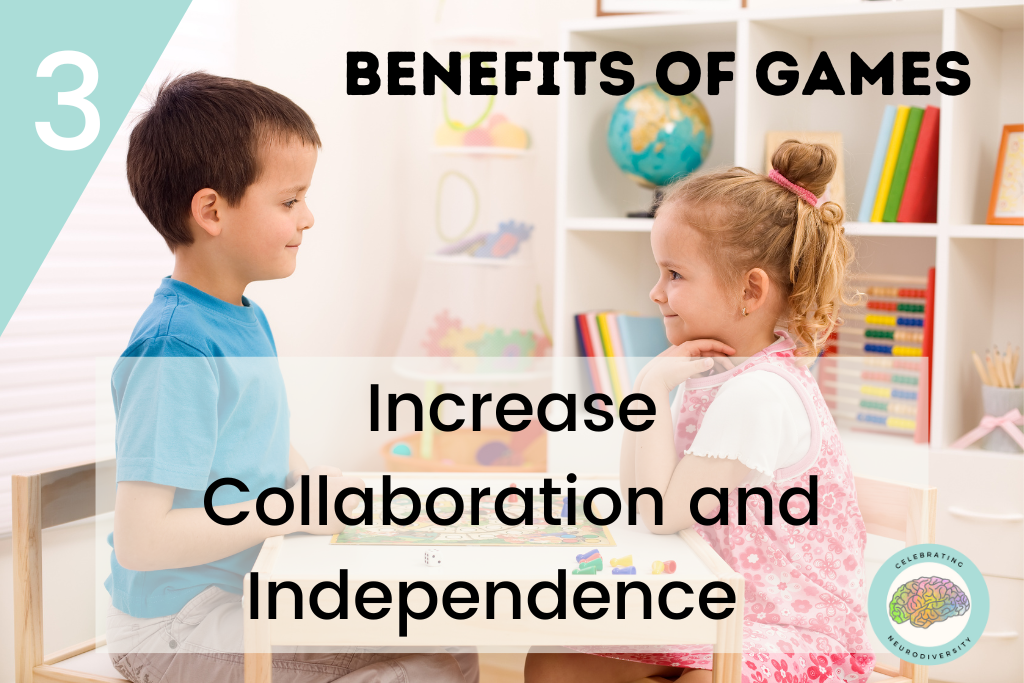
#3 Increase Collaboration and Independence
Reading games are one of my favorite ways to build both teamwork and autonomy in the classroom. When students play together, they’re naturally practicing turn-taking, communication, and listening all while using academic language tied to literacy skills. I’ve watched students coach each other through difficult words, celebrate each other’s wins, and build confidence in a supportive, low-pressure environment. Once a game has been taught, students can often play independently, making it a perfect fit for small groups, centers, or intervention time. This balance of peer collaboration and self-directed learning is especially valuable for neurodivergent students, who benefit from structure with flexibility.
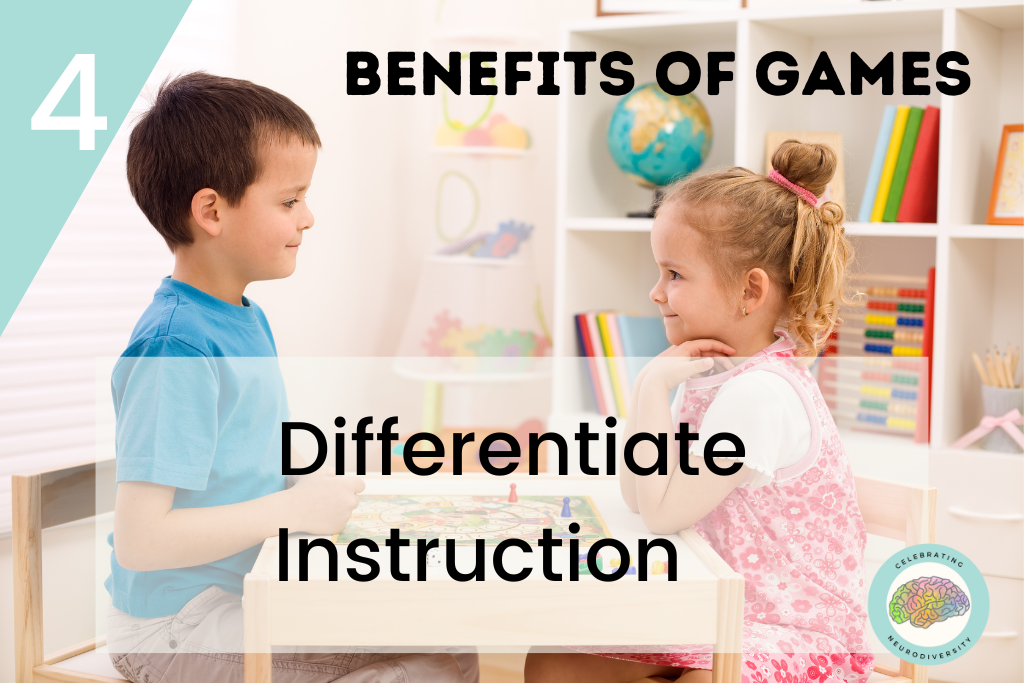
# 4 Differentiate Instruction
One of the biggest challenges teachers face is meeting the wide range of needs in a single classroom. Games make it easier. I can adapt the same game format to target different skills based on student’s level whether they’re working on beginning blends, multisyllabic decoding, or spelling rules. Students play at their own pace and with content tailored to their goals, all while feeling part of the group. This flexibility is a huge win in small groups, Tier 2 or 3 intervention, or mixed-level centers. Best of all, students don’t even realize they’re receiving differentiated support. It just feels like fun.
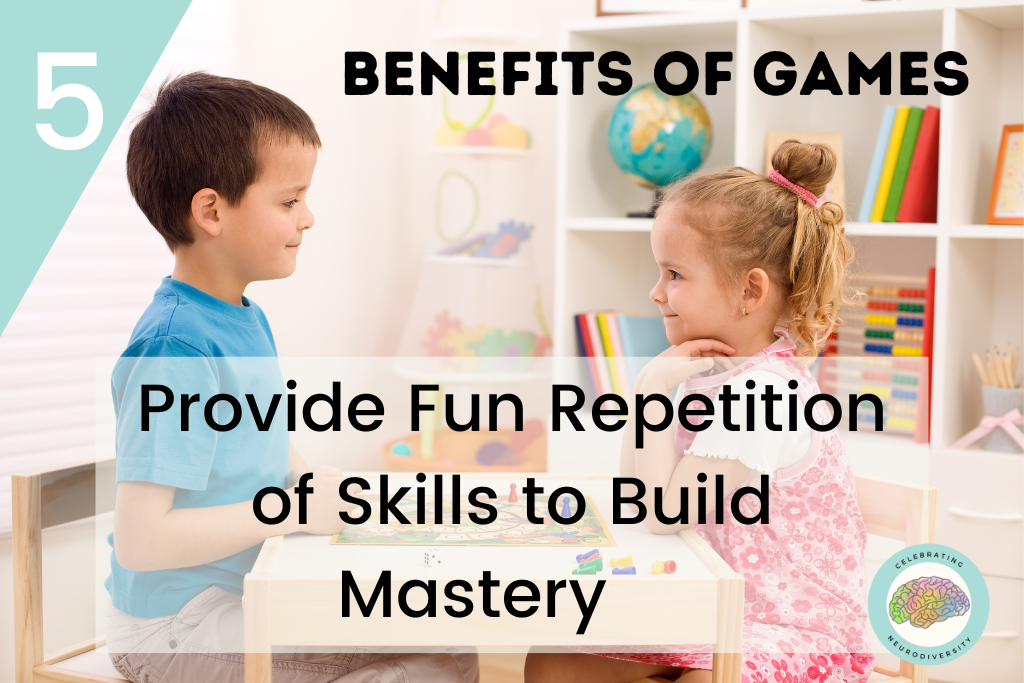
# 5 Provide Fun Repetition of Skills to Build Mastery
Repetition is essential for mastery but that doesn’t mean it has to be boring. Games allow students to review and apply the same skills multiple times in a way that feels fresh and exciting. They’re practicing decoding, spelling patterns, and vocabulary without even realizing it. Each round of play strengthens neural pathways in the brain, leading to faster, more automatic word recognition. As the research in Make It Stick reminds us, “Effortful retrieval enhances learning and retention.” That’s exactly what games do, they give students repeated exposure to skills in a fun, brain-friendly way that sticks.
Incorporating games with reading instruction has so many benefits and kids love games! My students beg to play games and I incorporate games into all my reading lessons. It is a win-win!
I have been creating games for phonics skills, spelling generalizations, and learning about syllables for my students and yours too! I have created three types of games. My students like the variety and I like that I only have to teach them how to play three different types of games for the whole year and they are off on their literacy journey.
Three Game Types
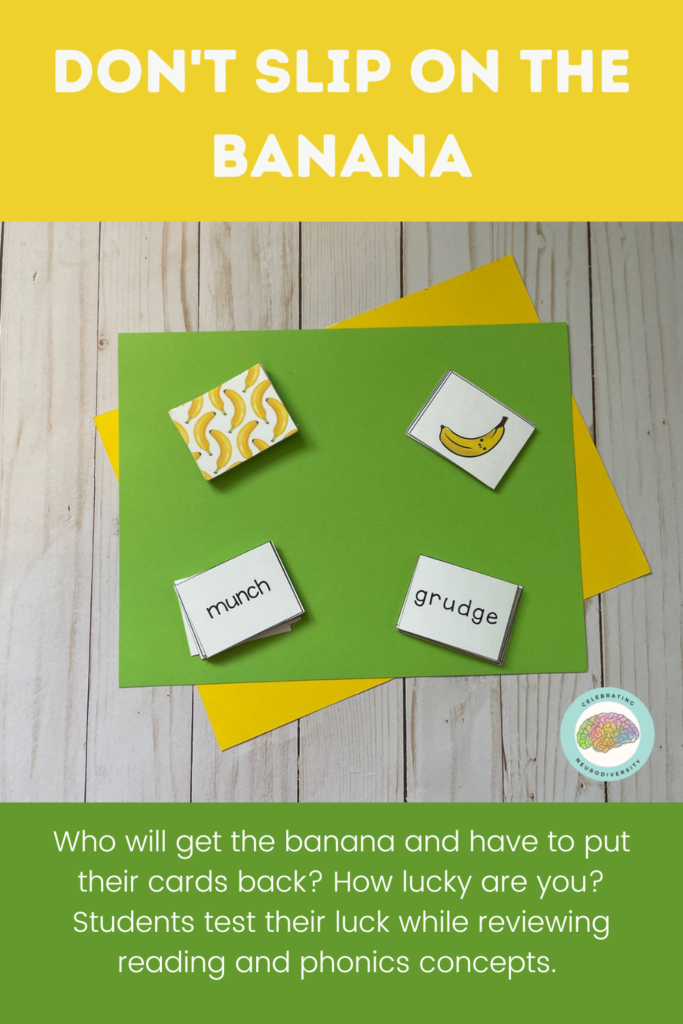
Don’t Slip on the Banana Games
This crowd favorite combines reading practice with just the right amount of suspense! Students take turns drawing cards, reading words aloud, and applying their phonics knowledge while hoping they don’t get the banana and have to put their cards back. This game reinforces accurate decoding while giving students repeated exposure to targeted phonics patterns in a playful setting. The element of surprise keeps even reluctant readers engaged, and the repeated practice builds automaticity and word recognition, all while students stay actively involved.
- 2-5 players
- Super easy to learn and play
- Card decks vary based on the phonics concepts
- Watch this game in action!
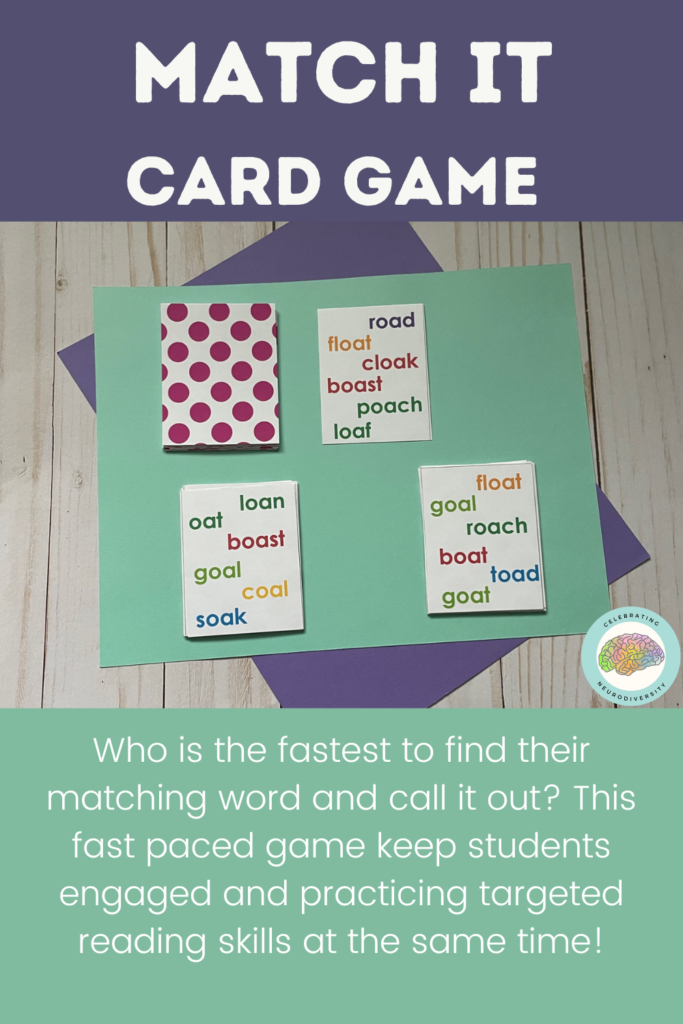
Match It Games
Every card has exactly one matching card in the deck. Students race to find their match. It’s fast-paced and full of reading practice. While they’re having fun, they’re also building fluency by reading words quickly and repeatedly, and strengthening visual discrimination as they scan for matching word patterns and orthographic features. This game helps train the brain to notice small differences between words which is an essential skill for accurate decoding and word recognition.
- 2-5 players
- 30 cards in each deck
- Always exactly one MATCH!
- Multiple ways to play
- Fast to teach and learn Watch this game in action
- Watch this game in action!
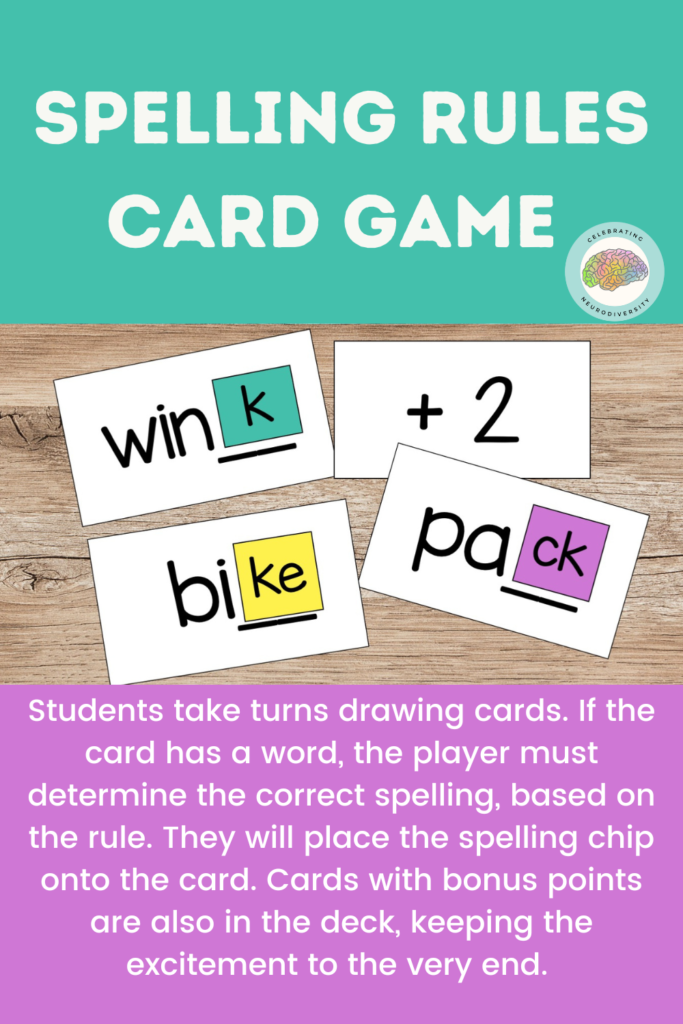
Spelling Games
These games are perfect for reinforcing phoneme to grapheme mapping and rule-based spelling in a way that feels like play.No spelling tests here. Students take turns drawing cards with words that follow a specific spelling rule. They must listen to the sounds, determine the correct spelling pattern, and place the matching chip on the card. This process strengthens their ability to connect sounds to letters, apply spelling generalizations, and develop orthographic memory a key components of fluent writing and reading. Bonus point cards keep the excitement going, and the hands-on approach is especially effective for multisensory learners.
- 2-8 players
- Spelling pattern chips to use with the game
- Watch this game in action!
Christmas in July: Celebrate with Play and Savings
Teachers and students LOVE these games and right now, you can grab them for less during my Christmas in July Sale! Whether you’re planning for next year, stocking your intervention toolkit, or just want to bring more joy into reading instruction, this is the perfect time to build your game collection.
Shop the Ultimate Reading Games Bundle – new games are continually added, and you’ll have lifetime access to updates!
My kiddos LOVE these games! What a fun way to practice all of the skills we are learning in grade 1!
Kimberly F.
★ ★ ★ ★ ★
Just need one game to target a specific skill? Browse individual games to help your students master phonics skills like a pro!
My kids ask for this game every week! They are obsessed!
Courtney J.
★ ★ ★ ★ ★
✨ Prefer to DIY your own games? Check out my post: Six Games for Reading
Keep Learning: Game-Based Reading Instruction in Action
Want to see how games fit into a structured literacy routine? This post will give you practical ideas you can use right away:
What is Orthographic Mapping and How Can I Use it to Increase Student Success?
Games make practice fun, but the science behind it is powerful. This post breaks down how the brain stores words and why repetition through play builds strong readers.
Are you ready to see reading success in your classroom?
Click here to get- The 4 Essentials to Reading Success
